M42 and M43
Great Orion Nebula and De Mairan’s Nebula
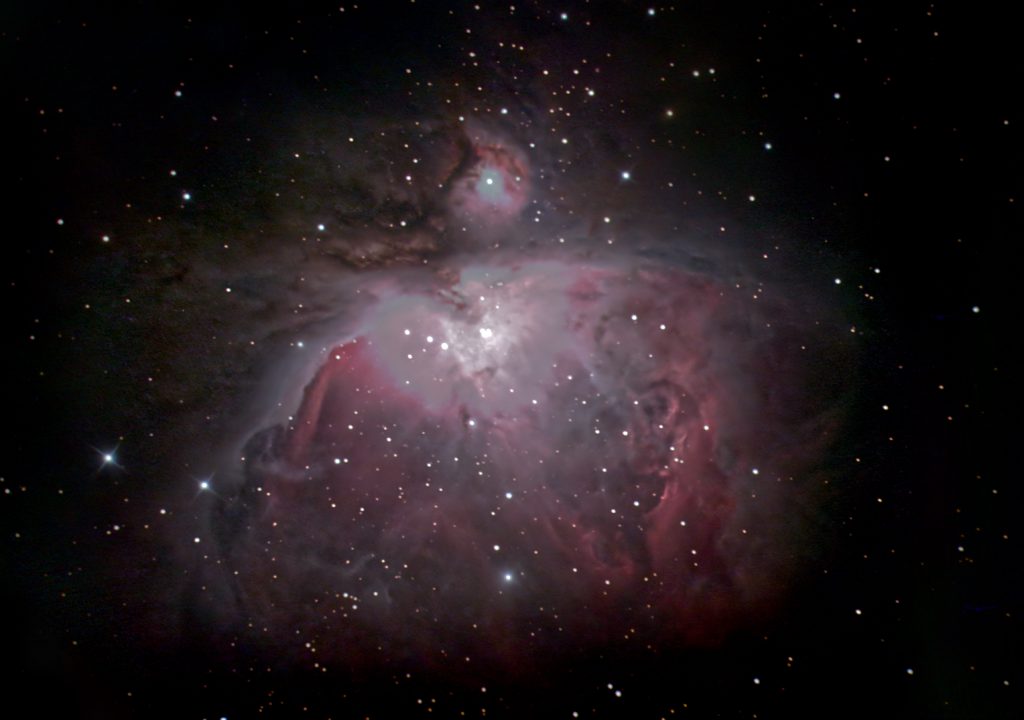
10.1″ f/4.5, Mallincam DS432cTEC with 0.5 focal reducer
Exposures = 2-12-22-22 sec, Live Stacked frames = 15-15-15-45 (90 total), Gain = 2-2-2-6 of 250
The Great Orion Nebula M42 is most of what we see here in this image, with the exception of the upside-down “comma” shaped nebula at the top which is M43 De Mairan’s Nebula. A multitude of pink and red hues dominate the colours, with tinges of grey-blue associated mainly with the “wings” of the nebula and more diffuse regions. According to Wikipedia, the red colouration is associated to Hydrogen-alpha radiation while the blue-violet is reflected radiation from the massive O-class stars at the core of the nebula. Dark brown obscuring material can also be see in between M42 and M43. At the center of M42’s core lies the Trapezium, 4 tightly-packed stars powering the nebula.
M42 spans about 45 arcminutes in this image; in reality it is about 1300 light years away and approximately 24 light years across.
This image was composed in Affinity Photo by layering a shorter live stack (15 frames at 2 sec Gain 2) as a luminosity mask with the full stack indicated above. This reduced the brightness of the central core area to reveal the Trapezium.
North at 1 o’clock, East at 10 o’clock
Live high dynamic range (LHDR) & stacking snaps as layers with M42
Snap 1

2 sec,
19 frames,
6 gain
+
Snap 2

12 sec,
8 frames,
6 gain
+
Snap 3
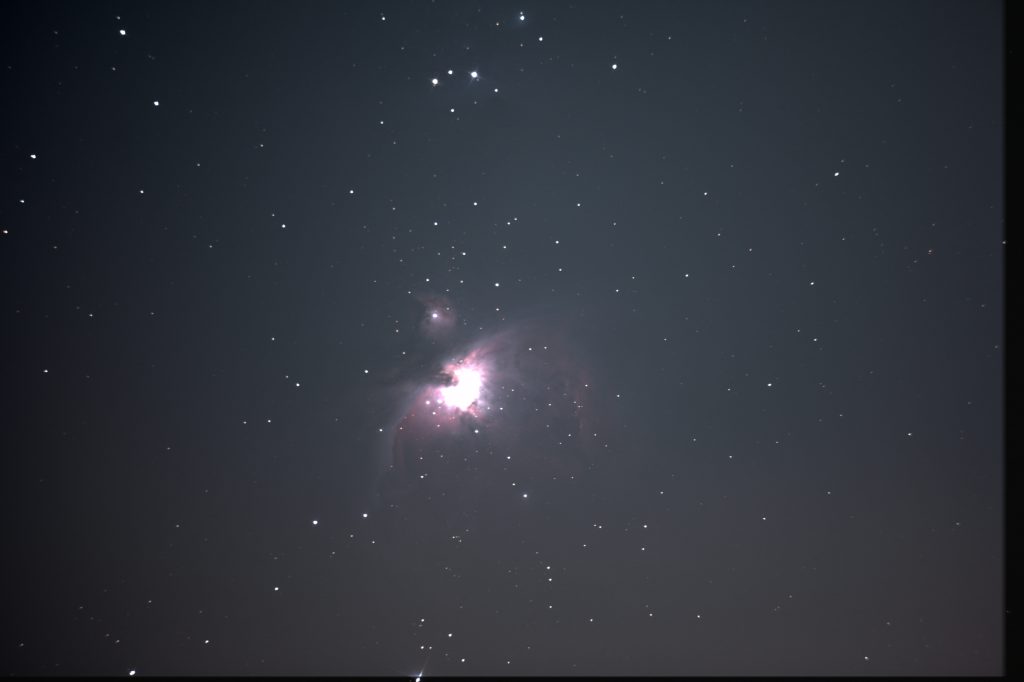
22 sec,
15 frames,
6 gain
+
Snap 4
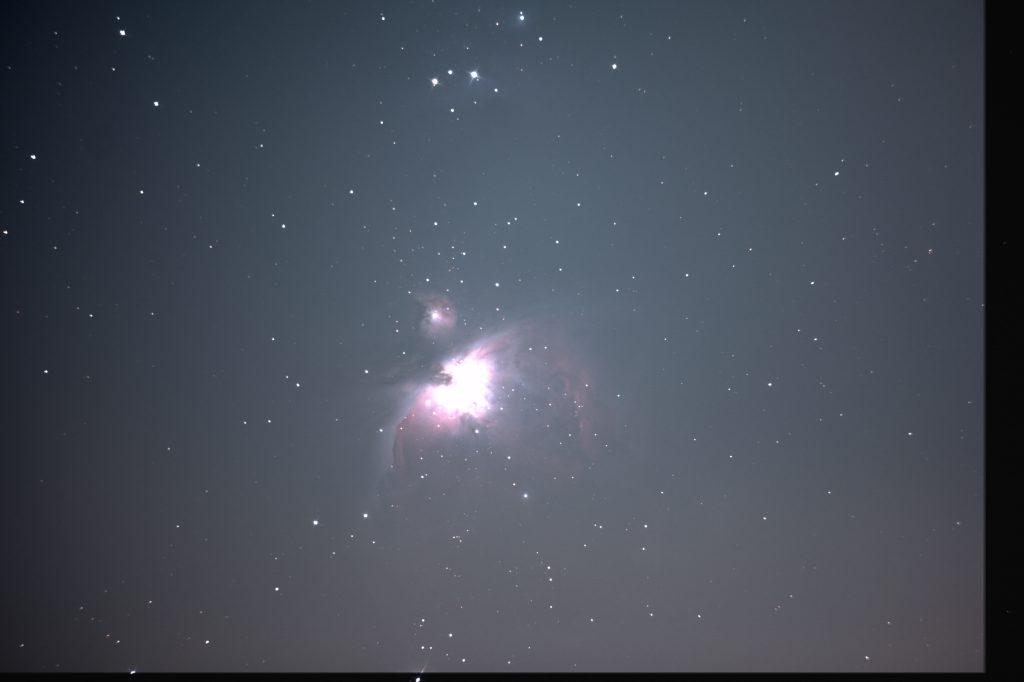
22 sec,
23 frames,
8 gain
+
Snap 5
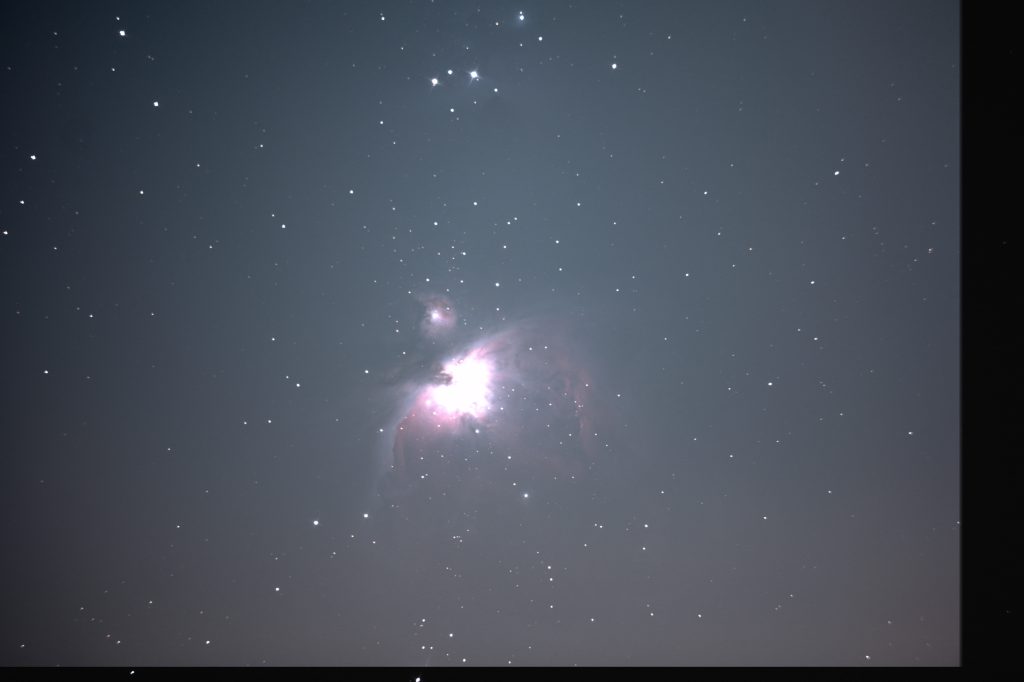
22 sec,
21 frames,
8 gain
The series of snapshots above, done with the DS24cTEC camera, provides an example of live stacking to increase the dynamic range of an exposure. Each snap contains a cumulative stack of frames compiled in MallincamSky software; as the software stacks frames live, additional details become visible in the extended parts of the nebula. Progressively increasing the exposures and/or gain as above is a way to preserve core details and reduce the overwhelming brightening as dimmer outer parts become visible.
In the case of M42 though, it is so bright that it’s still difficult to keep the core from getting over-exposed. After the observing session, we can post-process the results further. The final frame stack (Snap 5) is opened in Affinity Photo and filters such as Russell Crowman’s RC Astro plugins are used to reduce the background noise and gradients. To reintroduce core details back into the over-exposed parts of the image, Snaps 1 & 2 can be imported as layers and blended into Snap 5. Finally, the result can be refined further using BlurXterminator in PixInsight to produce the following:
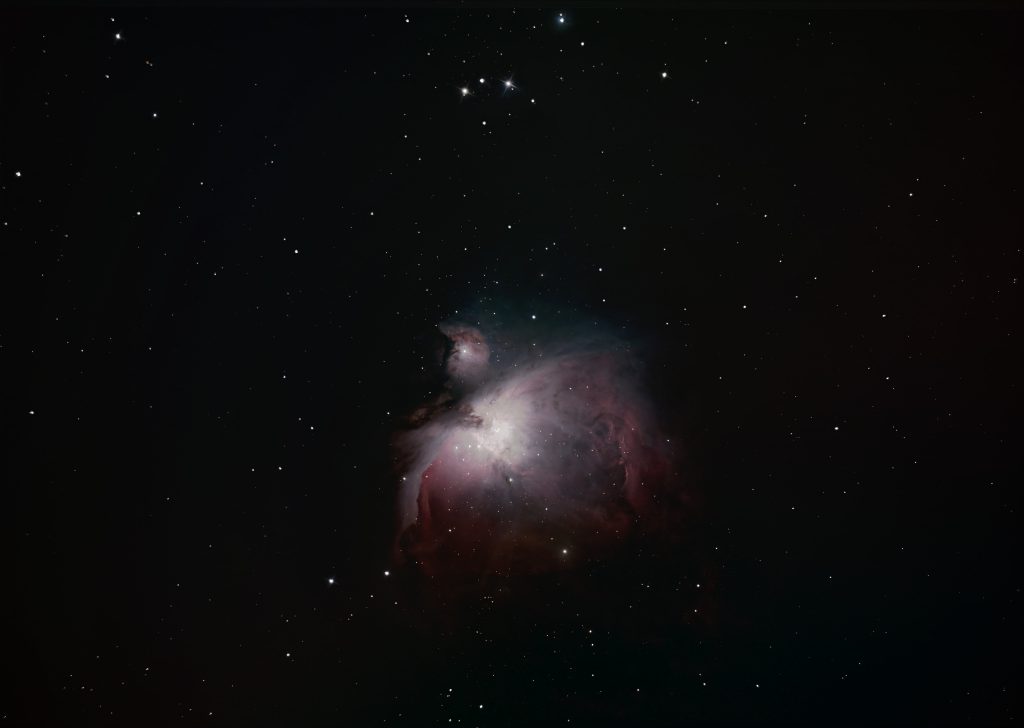
10.1″ f/4.5, Mallincam DS24cTEC
Exposures = 2-12-22-22-22 sec, Live Stacked frames = 19-8-15-23-21 (86 total), Gain = 6-6-6-8-8 of 150
Size of the field of view above is 1.2 degrees by 1.8 degrees. Zooming in to the core the Trapezium is clearly visible as a tight quadrilateral of stars – this was made possible by merging the dimmer Snap 1 layer with the Snap 2 and Snap 5 layers.

North at 12 o’clock, East at 9 o’clock